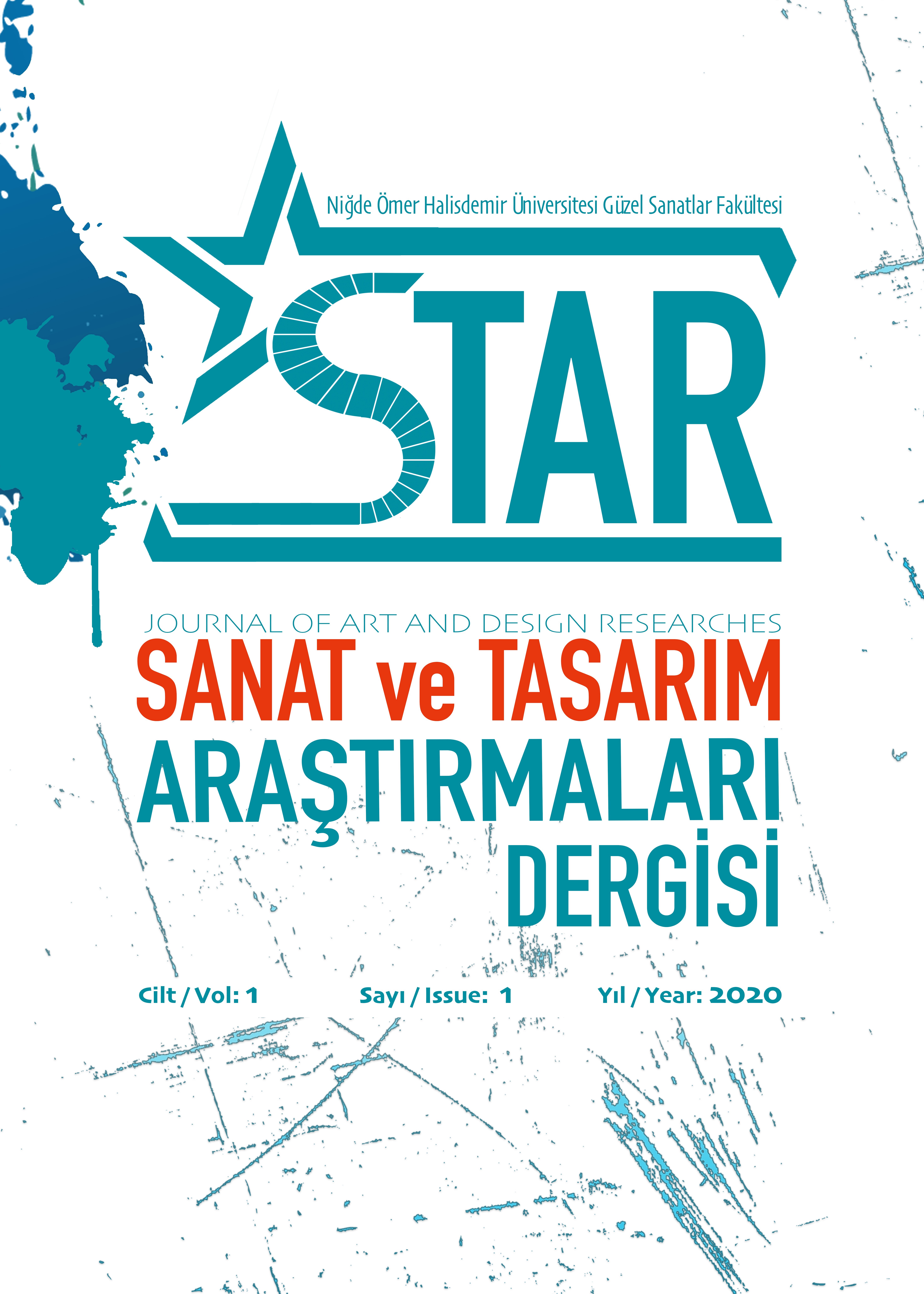Mimarlıkta Rengin Algısallığı: De Stijl ve Brütalizm Örnekleri
Perceptuality of Color in Architecture: De Stijl and Brutalism Examples
Color, Space, Perception, De Stijl, Brutalism,
___
- Adamska D., Nocuń, P., Ratajczak, T. & Záruba F. (2022). Color in medieval castle architecture in present-day Poland and Czech Republic. Arts, 11(1), 28.
- Altan, İ. (2015). Mimarlıkta mekan kavramı. İstanbul: Ofis 2005 Publishing.
- Altun, D. A. (2016). Brutalism now: rethinking Brutalism in contemporary world architecture. Arts, (5)3, 1.
- Birren, F. (1969). Psychological implications of color and illumination, Color Consultant, Newyork.
- Caivano, J. (2006). The research on color in architecture: brief history, current developments, and possible future. Color Research & Application, 31, 350-363.
- Convertino, F., Di Turi, S. & Stefanizzi, P. (2017). The color in the vernacular bioclimatic architecture in Mediterranean region. Energy Procedia, 126, 211-218.
- Gibson, J. (1954). The visual perception of objective motion and subjective movement. Psychological Review, 61(5), 304-314.
- Hidayetoğlu, M. L., Yıldırım, K. & Akalın, A. (2012). The effects of color and light on indoor wayfinding and the evaluation of the perceived environment. Journal of Environmental Psychology, 32, 50-58.
- Kalaycıoğlu, H. & Aras, U. (2015). İç mekan mobilyalarında renk faktörünün etkisi. Selçuk University Selçuk-Technical Journal, Special Issue-1, 92-973.
- Karabaş, P. A. & Güdür, A. (2016). Neo-plastisizm akımı kapsamında De Stijl hareketi ve Piet Mondrian. International Journal of Cultural and Social Studies (IntJCSS), (2)2, 330-339.
- Klinkhammer, B. (1999). The spatial use of color in early modernism. Paper presented at the 87th ACSA Annual Meeting Proceedings, Washington, USA. Retrieved from https://www.acsa-arch.org/proceedings/Annual%20Meeting%20Proceedings/ACSA.AM.87/ACSA.AM.87.49.pdf
- Köseoğlu, E. & Çelikkayalar, E . (2016). Yapılı çevrede renk tercihleri. The Journal of Architectural Sciences and Applications (JASA), (1)2, 57-65.
- Krispyn, E. (1976). Literature and De Stijl. In: Bulhof, F. (eds) Nijhoff, Van Ostaijen, “De Stijl” modernism in the Netherlands and Belgium in the first quarter of the 20th century. Dordrecht: Springer.
- Manav, B. (2015). Renk-anlam-mekan ilişkisi. The Turkish Online Journal of Design, Art and Communication, (5)3, 22-27.
- Norberg-Schulz, C. (1965). Intensions in architecture, Cambridge: The MIT Press. Özdemir, T. (2005). Tasarımda renk seçimini etkileyen kriterler. Ç.Ü. Social Sciences Institute Journal, (14)2, 391-402.
- Rahimi, N. & Dabagh, A. (2018). Study the mental effect of color in the interior architecture of the hospital spaces and effect on the patient tranquility. Amazonia Investiga, 7(13), 5-16.
- Seamon, D. (1982). The phenomenological contribution to environmental psychology. Journal of Environmental Psychology, 2(2), 119-140.
- Seamon, D. (2016). A phenomenological and hermeneutic reading of Rem Koolhaas’s Seattle Central Library: buildings as lifeworlds and architectural texts. R. Conroy Dalton & C. Hölscher (Ed.), Take one building: interdisciplinary research perspectives of the Seattle Central Library, in (pp.67-94). London: Routledge.
- Wilber, D. N. (1942). The role of color in architecture. Journal of the American Society of Architectural Historians, 2(1), 17–22.
- Wolfe, T. (1981). From Bauhaus to our house. New York: Picador.
- Yıldırım, K., Hidayetoğlu, M. L., Gökbulut, N. & Müezzinoğlu, M. K. (2019). Effects on students’ perceptual evaluations of the wall colors used in design studios by the virtual reality method. ICONARP International Journal of Architecture and Planning, 7(1), 99–120.
- Zimnicka, A., Balanicka, E. & Kroll, A. (2022). Evolution in approach to colour in tall buildings’ architecture on the Isle of Dogs, London, UK. Arts, 11(1), 9. Zybaczynski, V. M. (2014). Colour - important factor in preserving the local identity. Urbanism Arhitectură Construcţii, (5)4, 87-92.
- ISSN: e-ISSN: 2757-6736
- Yayın Aralığı: Yılda 2 Sayı
- Başlangıç: 2020
Senanur Kevser GÖKSOY, Orhan HACİHASANOGLU
Bir Hazır Giyim Firmasında Tasarım Süreçlerinin İyileştirilmesine Yönelik Örnek Uygulama
Mimarlıkta Rengin Algısallığı: De Stijl ve Brütalizm Örnekleri
Adil Ömer ÇAMAŞ, Emine KÖSEOĞLU
Beyhan PAMUK, Şengül EROL, Esra SUNERLİ, Fatih YALÇIN
Bursa'da Müze Olarak Kullanılan Geleneksel Konutlara Bir Örnek: Hüsnü Züber Evi ve Restorasyonu
Müzik Öğretmeni Adaylarının Mobil Müzik Uygulamaları Tercihleri
